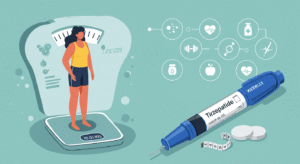Hormones play an integral role in regulating many processes in our bodies. As we age, hormone levels naturally decline, sometimes causing uncomfortable symptoms. Hormone replacement therapy (HRT) can provide relief by replacing hormones that the body no longer produces at adequate levels. If you’re considering starting HRT, it helps to understand the basics of how it works and what options are available.
What Is Hormone Replacement Therapy?
HRT supplements hormones that decline during perimenopause and menopause. The most common hormones prescribed are estrogen, progesterone, and testosterone. The goal of HRT is to alleviate troublesome menopausal symptoms like hot flashes, vaginal dryness, and mood changes by restoring hormone levels. This not only improves one’s quality of life but may also have protective health benefits like maintaining bone density, reducing fracture risk, and lowering the chances of colon cancer.
Different HRT Options
HRT regimens are tailored to one’s specific needs and health profile. Estrogen-only therapy is typically prescribed if the uterus has been surgently removed since estrogen unopposed by progesterone can increase the risk of uterine cancer. Women who still have their uterus usually take a combination of estrogen and progestin (synthetic progesterone). And for some women with low testosterone levels, their doctor may prescribe supplemental testosterone in addition to the standard estrogen/progestin regimen.
HRT medications come in various forms such as oral tablets, skin patches and creams, vaginal rings, estrogen gels, implanted pellets, and progesterone intrauterine devices (IUDs). Discuss the pros and cons of each method with your healthcare provider.
Short-term vs Long-term Use
Most experts recommend taking the “lowest dose that relieves symptoms” approach to HRT and using it for the shortest time possible. Short-term HRT will help get you through the menopause transition when symptoms peak, usually around ages 45-55. Long-term use for more than 5 years, however, poses health risks that likely outweigh benefits for most women.
Carefully weigh your reasons for continuing HRT beyond 5 years with your doctor, as well as consider lifestyle changes and non-hormonal therapies that could help manage your symptoms. Pay attention to any new signs or symptoms as your body continues adjusting hormone levels over time. Report these promptly so your treatment approach can be modified accordingly.
Who Should Not Take HRT
Certain health conditions may prohibit someone from being a candidate for HRT:
– History of blood clots, stroke, heart attack, heart disease, liver disease
– High blood pressure or cholesterol not well-controlled with medication
– Migraines with neurological symptoms
– History of hormone-influenced cancers like breast, uterine, ovarian
– Undiagnosed vaginal bleeding
Risks and Side Effects
When used appropriately under medical supervision, HRT is generally safe for healthy women in their 40s-50s. However, as with any medication, potential side effects include headaches, fluid retention, breast tenderness, irregular spotting, nausea. Most side effects resolve within a few months once the body adjusts.
Some small increased health risks have also been reported with combination HRT such as heart attack, stroke, blood clots, gallbladder disease, and dementia – most notably when it is taken by older women for more than 5 years. Speak to your doctor about whether the benefits outweigh downsides for your unique health status.
The decision about starting HRT is complex given the need to balance short-term relief of symptoms with uncertain long-term safety. But when taken as prescribed for up to 5 years, HRT remains the most effective option for alleviating troublesome menopausal symptoms that disrupt quality of life. Discuss all your concerns as well as family and personal health history with your healthcare provider to make the best individual choice regarding hormones for you.


